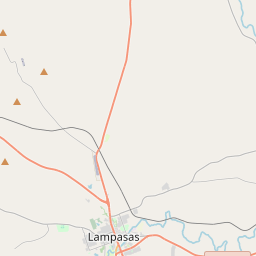First United Methodist Church of Lampasas
Historical marker location:





Methodists in Lampasas were holding church services as early as 1866. The Rev. William F. Cummins is the first known pastor to have served the Methodist circuit in this area.
Although the exact details of the organization of the First United Methodist Church of Lampasas are unclear, it is known that a sanctuary was built on Fourth Street in 1880, during the pastorate of The Rev. E. F. Kahle. Four years later, the congregation sponsored the opening of Centenary College. The Christian Boarding and Preparatory School was located in Lampasas and was in operation for about ten years. In 1900, under the leadership of The Rev. J. S. Braswell, the fellowship moved to a new church home on Key Avenue. The congregation relocated to Highway 190 East and Alexander Drive (1 mi. N) in 1966.
Mergers with the Black Methodist congregation known as Alice Chapel and a rural Methodist church at Ogles have strengthened the membership. With ties to the Reconstruction Era in Texas history, the First United Methodist Church of Lampasas has played a long and distinguished role in the leadership of this community. Descendants of some of the earliest known members still worship with the congregation
As one of the most visible programs of the Texas Historical Commission (THC), historical markers commemorate diverse topics in Texas history, including: the history and architecture of houses, commercial and public buildings, religious congregations, and military sites; events that changed the course of local and state history; and individuals who have made lasting contributions to the state, community organizations, and businesses.
The first domed stadium in the world, the Astrodome, was built in Houston in 1965 and hosted numerous sporting events and concerts over the years.
In 1852, Lampasas County was officially established, named after the Lampasas River that runs through the area. The county quickly became a prominent agricultural region, with cotton being the primary crop. The arrival of the Texas and Land Company railroad in 1882 further stimulated the local economy, as it facilitated trade and transportation in the area.
During the late 19th and early 20th centuries, Lampasas County also experienced economic growth due to the discovery of mineral resources. Manganese and zinc mining industries played a significant role in the county's development. Additionally, the city of Lampasas became a popular health resort destination, thanks to the therapeutic value of the local natural springs.
Throughout the years, Lampasas County has faced its fair share of challenges. The region went through difficult times during the Great Depression, with the decline of the agricultural industry. However, the county managed to bounce back and diversify its economy, embracing tourism and other industries. Today, Lampasas County remains a vibrant community with a blend of historical charm and modern development.
Lampasas County Timeline
This timeline provides a condensed summary of the historical journey of Lampasas County, Texas.
- 1854 - Lampasas County is founded and named after the Lampasas River.
- 1872 - The town of Lampasas becomes the county seat.
- 1882 - The Gulf, Colorado and Santa Fe Railway is completed through the county.
- 1885 - The first oil well in central Texas is drilled in Lampasas County.
- 1922 - The Hancock Springs Hotel, a popular health resort, is built.
- 1949 - The Fort Hood military reservation is established, impacting the county's economy.
- 1960s - The construction of the Highland Lakes dams brings tourism and recreation to the area.
- 1990s - The county experiences population growth and increased development.